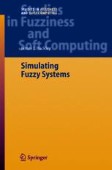Search
Search Results
-
Optimizing a Production Line
The simple production line considered in this chapter is shown in Fig. 20.1. This problem has been adapted from an example in [1]. This situation is...
-
Queuing I: One-Step Calculations
In this chapter we show situations where simulation can produce the same results as fuzzy calculations which employ the extension principle. We argue...
-
Simulation Programs
In this chapter we present some of the GPSS programs used in Chaps. 9–26. We had to omit many programs in order to keep this chapter. less that 20...
-
Summary and Conclusions
The first objective of this book is to explain how many systems naturally become fuzzy systems. The second objective is to show how regular (crisp)...
-
Machine Shop I
The queuing system in this chapter is shown in Fig. 11.1. This application was adopted from a problem in ([1], p.594). We continue this problem in...
-
From Genetic Variation to Probabilistic Modeling
Genetic algorithms ⦓GAs) [53, 83] are stochastic optimization methods inspired by natural evolution and genetics. Over the last few decades, GAs have...
-
Inventory Control II
This chapter continues the inventory control problem studied in the previous chapter. The new system is shown in Fig. 17.1. We have added two things...
-
Project Network Model
The project network diagram is in Fig. 26.1. This problem is modelled after an example in [2]. The project consists of various jobs that must be...
-
Queuing II: No One-Step Calculations
In this chapter we will study the fuzzy system shown in Fig. 5.1 now reproduced as Fig. 9.1. This example was adapted from an example in [1]. The...
-
Modular Neural Networks
We describe in this chapter the basic concepts, theory and algorithms of modular and ensemble neural networks. We will also give particular attention...
-
Type-1 Fuzzy Logic
This chapter introduces the basic concepts, notation, and basic operations for the type-1 fuzzy sets that will be needed in the following chapters....
-
Human Recognition using Face, Fingerprint and Voice
We describe in this chapter a new approach for human recognition using as information the face, fingerprint, and voice of a person. We have described...
-
Extremal Properties of Random Structures
The extremal characteristics of random structures, including trees, graphs, and networks, are discussed. A statistical physics approach is employed...
-
On the Analysis of Backtrack Proceduresfor the Colouring of Random Graphs
Backtrack search algorithms are procedures capable of deciding whether a decision problem has a solution or not through a sequence of trials and...
-
Attacks and Cascades in Complex Networks
This paper reviews two problems in the security of complex networks: cascades of overload failures on nodes and range-based attacks on links....
-
Tomography and Stability of Complex Networks
We study the structure of generalized random graphs with a given degree distribution P(k), and review studies on their behavior under both random...
-
Topology, Hierarchy, and Correlations in Internet Graphs
We present a statistical analysis of different metrics characterizing the topological properties of Internet maps, collected at two different...
-
The Small World Phenomenonin Hybrid Power Law Graphs
The small world phenomenon, that consistently occurs in numerous existing networks, refers to two similar but different properties — small average...
-
Critical Phenomena in a Small World
We consider the behavior of various systems on a small-world network near a critical point. Our starting point is a different, nonrandom system with...
-
Who Is the Best Connected Scientist?A Study of Scientific Coauthorship Networks
Using data from computer databases of scientific papers in physics, biomedical research, and computer science, we have constructed networks of...
